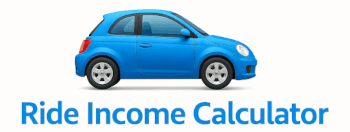Rideshare driving promises flexibility, independence, and fast cash—but how much do Ontario drivers actually make? Whether you’re in Toronto, Ottawa, or Peterborough, the answer depends on your hours, location, and how well you manage expenses. Let’s break down the real numbers behind Uber and Lyft income in Ontario.
💰 Gross Earnings: What Drivers See Before Expenses
Most Ontario drivers report gross hourly earnings between $18 and $28, with peak hours pushing that higher. Here’s what influences that range:
- City Size & Demand: Toronto drivers earn more due to higher ride volume and surge pricing. Smaller cities like Peterborough may average closer to $18–$22/hour.
- Time of Day: Driving during rush hour, weekends, or late nights boosts earnings through surge pricing and bonuses.
- Platform Incentives: Both Uber and Lyft offer weekly bonuses, streak rewards, and referral payouts that can add $50–$200/week.
🧾 Expenses: The Hidden Costs of Rideshare Driving
Gross earnings don’t tell the full story. Drivers must cover:
- Fuel: With gas prices in Ontario averaging $1.60–$1.80/L, fuel can eat up $10–$20/day depending on distance.
- Vehicle Maintenance: Oil changes, brakes, tires, and wear-and-tear add up—expect $0.05–$0.10/km in maintenance costs.
- Insurance: Rideshare insurance in Ontario is mandatory and can cost $150–$300/month.
- Depreciation: Every kilometer driven reduces your car’s resale value. This is often overlooked but significant.
After expenses, net income typically ranges from $12 to $20/hour.
📍 Regional Breakdown: Ontario Cities Compared
| City | Avg Gross/Hour | Avg Net/Hour | Notes |
|---|---|---|---|
| Toronto | $25–$30 | $18–$22 | High demand, high expenses |
| Ottawa | $22–$26 | $16–$20 | Steady volume, moderate costs |
| Hamilton | $20–$24 | $14–$18 | Good weekend earnings |
| Peterborough | $18–$22 | $12–$16 | Lower volume, lower expenses |
🧠 Smart Strategies to Boost Income
- Track Expenses: Use apps or spreadsheets to log fuel, maintenance, and insurance.
- Drive Strategically: Focus on high-demand zones and peak hours.
- Stack Bonuses: Combine platform incentives with referral programs.
- Use a Fuel-Efficient Vehicle: Hybrids and EVs can significantly reduce operating costs.
📝 Final Thoughts
Driving for Uber or Lyft in Ontario can be a solid side hustle or full-time gig—but only if you manage your time and expenses wisely. Gross earnings may look impressive, but net income is what matters. With the right strategy, drivers can earn consistently and even turn rideshare into a sustainable income stream.

